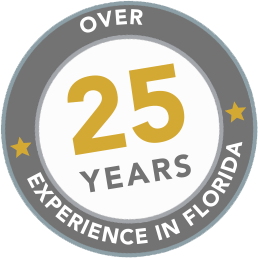What to do if you see a stranded dolphin
Several dolphin species occur in Florida coastal waters. The most common of these is the bottle-nosed dolphin (Tursiops truncatus)
Bottlenose dolphins have robust, powerful bodies that are blue-grey on top with lighter sides and bellies. As adults they are typically 6 to 12 feet long and can eat more than 20 pounds of mullet, fish and marine invertebrates each day.
Well known for showing a high degree of intelligence, dolphins have a wide range of vocalizations, and may cooperate in fishing or taking care of injured members of their group. Dolphins have been known to live into their 50s, and reach weights of up to 140-650kg.
Hopefully you have a good chance of seeing healthy wild dolphins enjoying their natural habitat if you spend time on Florida’s coast – and what a sight to see! Sometimes though, they can end up stranded, and for the best chance of their survival it’s essential to act quickly.
So what should you do if you see a beached marine mammal?
- CALL: FWC Wildlife Alert Hotline: 888-404-3922
- ASSIST: Follow Directions from a Trained Responder
If you can’t get help immediately here is some general advice:
- STOP: Don’t push them back out to sea: Stranded marine mammals may be sick or injured. Returning animals to sea delays examination and treatment and often results in the animal re-stranding in worse condition.
- DO stay with the animal until rescuers arrive, but use caution. Marine mammals can be dangerous and/or carry disease. Keep a safe distance from the head and tail. Also, minimize contact with the animal (use gloves if necessary) and avoid inhaling the animal’s expired air.
- If the animal is alive, *DO keep its skin moist and coo*l by splashing water over its body. Use wet towels to help keep the skin moist and prevent sunburn.
- If the animal is alive, DON’T cover or obstruct the blowhole. Try to keep sand and water away from the blowhole.
- DO keep crowds away and noise levels down to avoid causing further stress to the animal.
- DO report all dead marine mammals, even if they are decomposed.
- DO keep dogs/pets away from the live or dead marine mammal.
- DON’T collect any parts (tissues, teeth, bones, or gear, etc.) from dead animals. They are still covered by the Marine Mammal Protection Act.
If you’re out on the ocean or inlets of Florida, you can help protect marine mammals and their habitat by following a few simple rules:
- Obey Posted Speed Zones
- Keep Fishing Debris and Trash Out of the Water
- Observe from a Distance - Minimum 50 yards
- Never Feed or Offer Water to an Animal
Swimming with or feeding wild dolphins can be dangerous for both human and dolphins and should not be attempted. As they are wild animals, they need to be able to express their natural instincts to continue to thrive in their habitat. By encouraging dolphins to interact with humans unnecessarily, we risk disrupting that behaviour – so increasing their risk of injury from boats, incidents of entanglement in fishing, and decreasing their willingness to forage for food
Inappropriate non-food items, contaminated food and food meant for human consumption can jeopardize the health of all the diverse species found in the waters of Florida, so taking your rubbish and food away with you when you leave is the best thing you can do.
Visiting the many wildlife preserves in and around Orlando is an incredible, rewarding experience and seeing these incredible creatures in their natural environment is well worth the trip, and we highly recommend building a visit into your schedule when in Orlando.
Where else can I see wild marine mammals in Florida?
We have plenty of advice in our blogs on some great places to see marine mammals:
At New Smyrna Beach you can see Dolphins at Indian River Lagoon Several species live in the waters of the Indian River Lagoon, however bottlenose dolphins are the most common, with over 1000 of them living here.
For more of Florida’s native wildlife head to Merritt Island National Wildlife Refuge : where you can see alligators, along with otters, turtles, manatees, wild pigs and, especially, birdlife, the 140,000-acre Refuge is definitely the place to go.
Another trip for guaranteed alligator sightings is the Lake Apopka Wildlife Drive; where you’ll also see egrets, herons, ospreys, anhingas, swallow-tailed kites and a huge variety of water fowl, and it is quite common to see them feasting on fresh-caught fish (or even snakes) beside the road. It’s just half an hour’s drive north of Walt Disney World, and it’s also FREE!
If you like to get right on the water you don’t have to travel far from our villas in Orlando; to take an airboat ride. Airboats are propelled by giant fans in a protective metal cage; pushing air behind the boat and propelling it forward to quickly glide across the water, unlike any other boat.
There are a few places to take airboat trips, on Florida’s swamps, marshes and rivers. You’ll see a completely different side of Florida; with a good chance of seeing alligators, manatees and other Florida wildlife in their natural habitat.
Where can I hike in Orlando and see native wildlife up close?
We have a guide to some of the best hiking trails in Florida. Locations with well-maintained trails and parking include Crooked Lake Prairie, Lake Louisa State Park, Circle B Bar Reserve, Allen David Broussard Catfish Creek Preserve State Park, The Se7en Wetlands Park and Lake Kissimmee State Park.
Many of these parks have a variety of trails suitable for all levels of mobility – from wheelchair to seasoned hiker. It’s best to check out individual parks for suitability and opening times.






